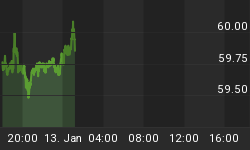Commentators and pundits alike have erroneously stated that last week's highs in US equity indices broke important technical levels. The Dow has not only failed to breach above a key trend line resistance of 12,920, prevailing since the October highs but also failed to breach the 50% retracement from the same high to the January lows. Similarly, the S&P500's major resistance stands at the 1,410 trend line resistance acting since the October 10 highs. We remind our readers that these recurring failures are no coincidence but instead a technical failure that is largely in synch with prolonged economic uncertainty.
The near bankruptcy of Bear Stearns has become a benchmark of market risk and fear, desensitizing market participants from what is likely to be a slow and long deterioration in US labor markets and an increasingly retrenched US consumer.
Friday's Jobs Report to Elucidate Economic View
We remind readers of the following facts in US labor markets. In the 2000-02 recession, there were as many as 15 consecutive months of negative payrolls between March 2001 and May 2002 producing a monthly average of 148K. In the 1990-91 recession, the longest streak of losing payrolls was 11 consecutive months --between July 1990 and May 1991-- producing an average of 147K. In the current slowdown (not yet officially declared a recession), we're only in the third straight monthly decline in payrolls, with the monthly average standing at 59K. Thus, to be consistent with previous recessions, payrolls will likely register negative readings for the rest of the year into Q1 2009. This also means that the unemployment's recent rise to 5.1% is here to stay and the rate is most likely to climb to as high as 5.9-6.0% by year end.
-
The dollar holds firm across the board despite oil's earlier surge towards the $120 per barrel mark resulting from strikes in Nigeria and BP's refinery shutdown. Traders are reluctant to be exposed to shorting the US currency ahead of Wednesday's FOMC decision, which may signal the Fed's intention to pause its 8-month long easing campaign.
-
Rather than stating its intention to bring an end to the rate cuts, the FOMC will likely communicate a change of tack by making a reference to stabilizing market conditions, leading market participants to expect a reduction in the easing momentum.
-
The Fed cannot refer to improved macroeconomic conditions or an increase in money market liquidity as the factors to a change in policy. Rather, the chief reason is high inflation at home and abroad as well as the falling value of the dollar. Indeed, baring individual supply issues (bio fuels' substitution factor, extensive draughts in Australia and labor/ guerilla action in Nigerian oil plants), the falling value of the dollar has been an integral component of soaring commodity prices. With the United Nations Secretary General proclaiming the food prices situation as "global crisis", and the International Monetary Fund calling on the major industrialized economies to undertake emergency measures, stabilizing the value of the dollar has become a matter of global priority rather than just unwanted currency volatility.
-
But there is more to the dollar rebound than Fed expectations. The unequivocally easing policies adopted by central banks of England and Canada have already shed significant ground from GBP and CAD. We continue to expect the BoE and BoC to cut by an aggregate 100 bps and 50 bps respectively this year.
-
We're not calling the end of the rate cuts. Regardless of whether the Fed holds rates unchanged in June, we expect the easing campaign to resume later in Q3 due to the persistence of the credit crunch -- as underlined by rising LIBOR values -- deteriorating labor markets and continued housing slowdown.
-
Examples of pauses in Fed cuts are recent. During the 2001-3 easing, the Fed slashed rates from 6.0% in January 2001 to 1.75% in December 2001, before pausing for 10 months. It then resumed cutting rates into the ensuing 8 months, taking rates to 1.00%. Since there is no scheduled Fed meeting in May, the central bank will have a chance to remain in the background, examining conditions for nearly two months, until its June 25 decision.
EURUSD has not shown the same kind of rebound that is typical of sharp oil gains as those of today mainly due to prolonged positive USD sentiment ahead of the Fed. Last week's bigger than expected decline in the IFO release has yet to show whether it was a one-month aberration. The week's array of US economic releases could display a host of disappointing figures, but markets are bracing for the more timely decision of the FOMC. A 25-bp rate cut may extend EUR losses to as low as $1.5530 and $1.5500 while no rate cut is expected to call up the $1.5430s. But we do warn of extensive post-Fed EUR selling due to the possible repercussions from what maybe another gloomy labor report on Friday.
USDJPY sees little action due to the extended Golden Week Holiday in Japan. Fed expectations combined with positive corporate earnings may prop the pair to as high as 104.65-70, but resistance is to remain in command at 104.90-95 until the Wednesday decision. US consumer confidence and Q1 GDP on Tuesday and Wednesday may prove potentially USD positive. Support holds steady at 104.00, backed by 103.65.
GBPUSD is expected to limit any further gains at $1.9935-40 as dollar momentum is expected to prolong throughput the US session, despite rising oil prices. We continue to stress traders' proclivity to sell the highs in cable, making the $1.9960 and 1.9980 considerable resistance levels.
















